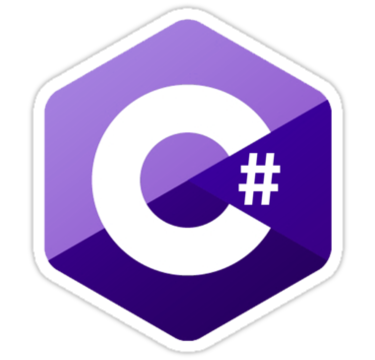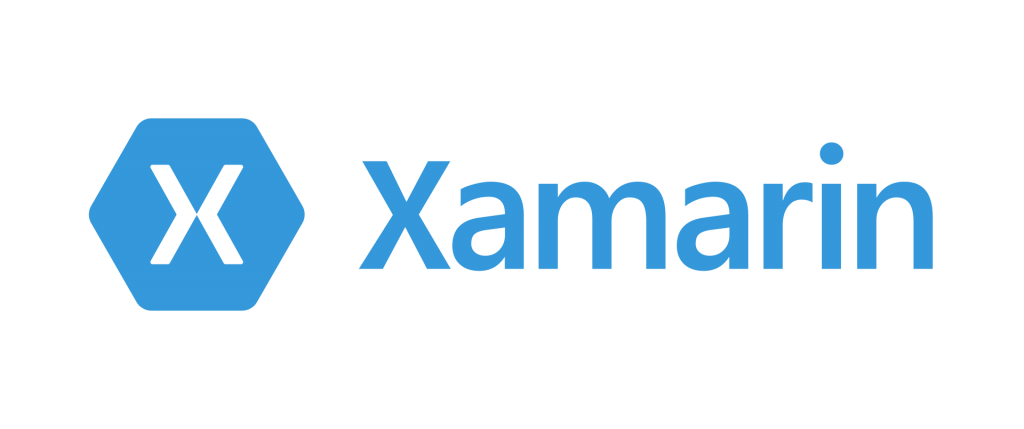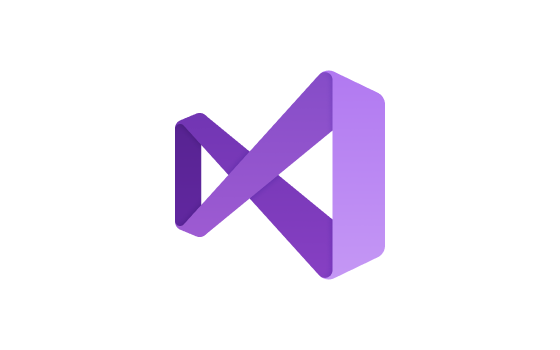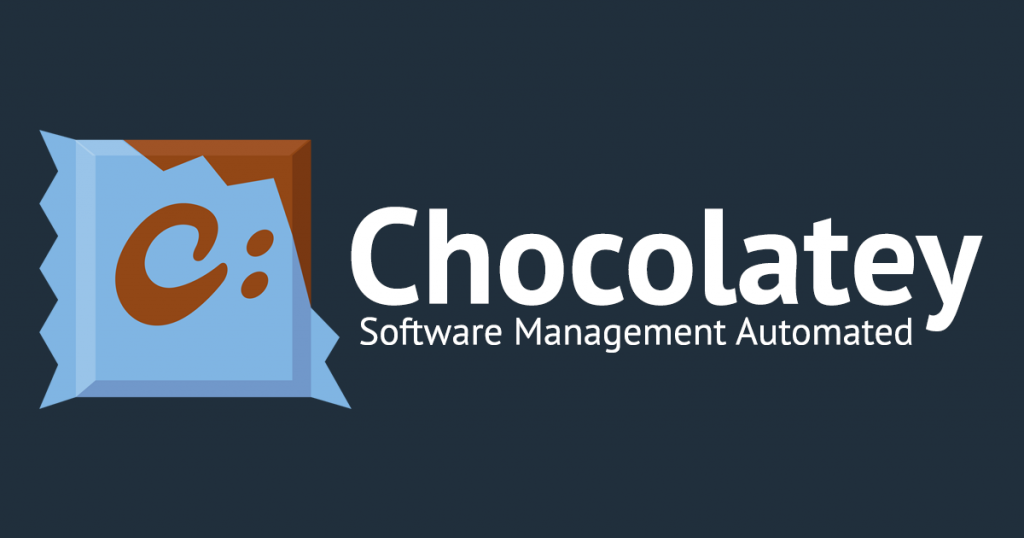Table Of Content
A Developer’s Guide to .NET Development and its Importance in 2023
Developers today have a choice of opting for a larger variety of technologies and environments to make a career. While many of these options are still on the rise, and a fast one at that, a few of these dev environments have already made their mark on the industry.
One of the most popular option on the market for a long time, .NET development is still going strong after decades of serving the community. Competing with rival ecosystems like Java or PHP, or the more modern Python, .NET has proved itself a worthy adversary.
Today, many companies hire custom .NET development services providers to create, manage, and support their tech products developed using the .NET tech stack such as an ERP software system. But before we get to the topic of what a .NET developer actually does, let’s first understand the .NET environment itself.
What is .NET Development?
.NET is a is an open-source, software framework for computers running Windows, Linus, or MacOS. It is a managed ecosystem designed and run by Microsoft, made to allow for easy development and implementation of desktop and web apps.
As part of the .NET ecosystem, it provides a popular platform for businesses and entities who require a host of services and features, such as server-side implementation, software development planning, desktop interfaces, mobile and web interfaces, and even the implementation of cloud services.
And while you might think that there are other options offering the same features and functionalities, the fact of the matter is that .NET is one of the few all-in-one options for companies looking to create a robust and secure software product. That is one of the reasons as to why developers prefer .NET as their development platform of choice.
According to Statista, .NET Framework was the most used software development library or framework globally, in 2021, with a 34.2% usage rate. Moreover, the top three most used development libraries were rounded off by .NET Core/ .NET 5 in third, with 31.5% usage rate.
Looking For Expert .Net Developers?
Over the years, the .NET platform has proved itself as one of the more robust and popular option, for both developers as well as consumers. And with Microsoft’s Windows being the most popular and commonly used operating system in the majority of the world, there is a huge collection of tools and software made using the various .NET technologies of different eras.
As the world has moved from a purely desktop based environment to mobile, the advent of web apps too has seen the involvement of various .NET technologies, such as ASP.NET. Moreover, Microsoft continuously adds new functionality and support for new and emerging technologies, such as cloud services.
And unlike Java or PHP, which pose several compatibility issues with third-party implementations, the elements of conformity and uniformity helps the various technologies in the .NET stack to work together seamlessly.
Let’s take a look at the popular technologies and elements that make up the modern .NET environment.
What Technologies Make Up the .NET Development Stack?
Currently, there are many different technologies and tools that make up the .NET environment. Each of these technologies and frameworks are designed with a specific purpose in mind, with features designed to cover the various needs required to fulfill that purpose.
For the development of web-apps and other web-based projects, the ASP.NET and the ASP.NET Core frameworks are designed to work with other web technologies to create robust and feature-rich software. Similarly, for the Windows desktop environment, developers can use the WPF and Win Forms API to create feature rich and fast desktop clients. Finally, if a project needs to be developed for the mobile ecosystem for platforms such as iOS and Android, Xamarin from the .NET stack can you help you build robust, near-native apps.
Let’s take a look at some of the more popular technologies that make up the .NET environment.
C#, VB.NET, and more

C# is one of the most popular and widely used programming language for the .NET environment today. It is used to develop a wide variety of software products and solutions for the .NET environment, and is the technology of choice for developers looking to create desktop apps for the Windows OS.
Similarly, VB.NET has also seen extensive use before C# became popular, with many legacy desktop apps for the Windows platform written using this technology. Even today, VB.NET is used to create macros for Microsoft products like the Office Suite.
Moreover, there are a number of other popular technologies that are used to develop feature-rich and robust software solutions using the .NET development environment.
ASP.NET
ASP.NET is an open source development framework that is designed to help developers create web apps and other web-related services. The apps developed using the ASP.NET are hosted on a Windows IIS server, which makes it easy to access them from any web browser.
Some of the biggest benefits of using ASP.NET to develop web apps over desktop apps include:
- Single deployment software, with no need to install it on individual clients.
- Can be used on a variety of operating systems and environments, provided that they support a web browser capable of running the app.
- As there is a single deployment, pushing updates is easier compared to software with multiple client deployments.
The most interesting feature of using ASP.NET is that the majority of code written is run on the server end of the pipeline. That means that the data access layer is designed to run in the same application domain, which doesn’t limit the security or scalability of the overall project.
But how is it that by processing the majority of its code on the server side helps with its security? A software that divides the processing of its code between its client side implementation and server deployment needs some form of middle infrastructure connecting the two on the data access layer.
This poses a security risk. However, this is rectified by ASP.NET, which runs its critical code at the server-side, and therefore doesn’t need a middle layer.
ASP.NET Core
This is a relatively recent addition to the .NET family, and is quite similar in structure and functionality to the ASP.NET. However, unlike ASP.NET, it works in both the .NET framework and the .NET Core environments. This allows it to be used to develop cross-platform applications in the .NET environment.
An open source software technology, the ASP.NET Core has a modular structure. Moreover, it also ditches the infamous bloatware of Web Forms, and doesn’t rely on System.Web to work. This makes it highly suitable as an option to develop microservices as well as deploying intra-container solutions.
Support for ASP.NET Core was added to Microsoft’s Visual Studio IDE for the 2016 version of the popular development tool.
Windows Presentation Foundation
Windows Presentation Foundation, more commonly known as WPF, is the .NET technology that enables developers to create different types of application software for the Windows operating system. As its name suggests, the technology’s primary focus besides functionality, is an appealing design and appearance.
Released as part of the .NET Framework 3.0, it was designed to create feature-rich desktop solutions, and since its inception has helped many .NET developers create exceptional software. However, many newcomers tend to confuse it with WinForms. There are a number of differences between the two, such as:
- Unlike WinForms, WPF supports better and more advanced graphics to modify its visuals. 3D, multimedia, and free transform, with true transparency.
- User interfaces can be declared using XAML files. These design files are separate from the functional code of the software. This helps separate the UI from functionality.
- WPF offers extensive support for dynamic UI layouts. This ensures that a developer can create a software without worrying about style elements overlapping at different screen sizes or orientations.
- Data binding is more reliable than WinForms when using WPF for your projects.
- The size of the software screens is calculated using DPI instead of pixels. This ensures that the software screens are rendered according to the specific DPI setting of each client’s screen, without any glitches.
- Unlike WinForms, WPF utilizes DirectX for its renderings. This makes it quite faster, by utilizing the advantages of hardware acceleration graphics processing.
WinForms
Windows Forms, or WinForms for short, is an API for the client side, which comes standard with the .NET Framework. It offers most of the functionalities required to develop an application for the Windows environment, and is essential in maintaining and managing legacy solutions.
However, it is quite simple compared to WPF, and is rarely used now, with developers choosing to opt for the modern WPF, as it allows for more dynamic designs. The differences include:
- WinForms use the concept of pixels to set the size and position of various design elements on its user interfaces. That means that any users who opt for different DPI settings than the ones used by the developer, they will find that the UI will look different than the one they expected.
- Customizing any drop-down menus and lists is very labor and time-consuming, as the majority of the controls do not support the layout function. This makes it harder to work with, especially when WPF is far more user-friendly in this instance.
- It is quite difficult to make WinForms more dynamic, as the layouts even lack a true transparency. However, it is a far easier framework to learn, and is still supported by a number of third-party controls for integration.
Xamarin Native

Xamarin is an open-source app development platform for mobile environments. As Microsoft’s propriety .NET development technology for mobiles, Xamarin extends the platform using libraries and tool packs. Using this technology, .NET developers are able to create near native mobile apps for Android, iOS, Chrome, and even for wearables such as smart watches.
The codebases for Xamarin are developed using C#, which are then reusable for multiple platforms. This allows for reusability of core functional code, such as data handling, functional logic, networking, and more.
The biggest benefit Xamarin provides for .NET development, is the ability to functionally create a single app, which is then implemented using slightly different methods for the various mobile platforms. This reduces company costs drastically, both for the initial development as well as the upkeep.
Moreover, it also allows for a quick turnaround time for projects where deadlines are short, yet the product needs to be reliable and robust.
To build apps for the iOS and Android platforms as per the latest software development trends, developers use Xamarin. Android and Xamarin. IOS. that allows app developers to create individual layouts according to each platform, reducing the chances of faulty UI elements.
However, if you do not want to design custom interfaces for each platform, you can opt for Xamarin.Forms. This allows the mobile app to have a single UI layout, using the XAML language.
Xamarin.Forms
Xamarin.Forms are a type of Xamarin app implementation where a universal interface is designed for the mobile app, whether it is for the Android platform, or the iOS platform. While not as extensive in advanced UI elements native to various mobile operating systems, it does allow .NET developers to use a majority of the popular yet basic UI elements.
That makes it suitable for applications where the screens are not very demanding, such as pages to display data and information. A great example for Xamarin.Forms usage can be the development of a simple text messaging app.
Simplify Your .Net Software Development!
Universal Windows Platform

Also known as the UWP, the Universal Windows Platform is a technology used to develop apps designed for Microsoft’s Windows 10 platform. Distributed via the Windows Store, computers and other devices running the Windows 10 OS can install and use these apps easily.
What sets it apart from other .NET development technologies, is that UWP uses a rich client API influenced by the WPF framework, which is designed specifically for touch-based interfaces. Moreover, to cater to a variety of screen sizes and layouts, UWP uses XAML for its layouts.
The History of .NET and the Rise of the .NET Developer

The late 1990s were a great time for technology. Companies were in a race to produce better hardware and software components. Every other day saw a new technological advancement announced, and corporations like Microsoft were leading the charge in the software industry.
Thus the engineers at the company came up with the .NET framework. The idea behind it was simple – create an environment for the management and execution of managed code in a runtime scenario. The purpose behind the environment’s inception was to create a better, more efficient development experience that would leave the developers free to focus on the core functionality of the software.
Previously, the developers had to handle and rectify various issues related to critical OS-level elements. This included security scripts, memory management, and many other basic operations C or C++ developers generally faced in their developmental projects.
What is .NET Framework?

.NET Framework is essentially, the original implementation of the .NET technology. It is a software development framework and environment which allows you to develop a variety of software solutions. Designed primarily for the Windows environment, the .NET Framework is a set of technologies that can be used to develop software solutions for other operating systems as well, including Linux, Android, iOS, macOS, and more.
However, .NET itself is a unification of different technologies that provides a platform for developers to build their software. Its current version allows developers an open-source platform to develop software products for the web, mobile, cloud, and desktop environments.
The .NET Framework project began in late 1999, albeit unofficially. However, in January 2000, Microsoft officially announced the development of a new software technology at a press conference. After a lot of extensive research and development, the first version of the .NET Framework was released in February of 2002.
Over the years, the .NET Framework has gone through many major changes, bringing a host of new features and functionality with each new iteration.
.NET Framework Versus .NET Core
This is an issue which plagues many people new to .NET development – .NET Framework vs. .NET Core. Essentially, the .NET Core can be considered a descendant and successor to the famed .NET Framework. It is an open-source environment, that allows cross-platform development for major operating systems like Linux, Mac, and Windows of course.
Released in 2016, the .NET Core was updated for the next four years, with its last official version being 3.1. However, in 2020, Microsoft revealed the latest version of the framework, naming it the .NET 5. Dropping the word Core from the name, and skipping the entire version 4 line to avoid confusion with the .NET Framework naming convention.
The current version in use is the .NET 6, released in November 2021. .NET developers who want to use the latest version of the framework for their software projects can easily download it from Microsoft’s official website.
The Popularity and Use of the .NET Framework and .NET Core Today
Ever since its inception, .NET Framework has been a popular choice for developers. As of today, developers can easily launch and work on .NET Framework on Windows 10 and earlier iterations. However, support for any upcoming operating systems, such as Windows 11, is not guaranteed.
.NET Core too quickly rose in popularity, especially since unlike .NET Framework, it could be launched and run on a variety of operating systems, including Mac and Linux. This cross-platform support is especially important today, as people today use a wide variety of devices and platforms, from mobile phones to laptops and desktops, and even wearables.
According to a developer survey by Stack Overflow in 2021, the .NET framework is still the most popular development framework across the globe, showing that it is still highly relevant in today’s day and age.
Software Development in .NET: What is .NET Used for?
Software development in .NET, or .NET development for short, covers a wide array of platforms and environments for which tools and custom software solutions can be created. Using many of the popular .NET technologies, you can hire a .NET developer to create:
- Frontend .NET development
- Backend .NET development
- .NET Web apps
- .NET mobile apps
- .NET desktop apps
- Internet-of-Things solutions
- Games & Simulations
- And much more
Essentially, developers can create almost any kind of solution using .NET technologies today, from standalone apps to complete networked or cloud solutions.
What Exactly Do .NET Development Services Offer?
Now that you know why .NET is so popular, and how they can help businesses, you might be wondering what exactly do .NET development services offer. Basically, these companies provide any and all services related to developing a software for and using the .NET platform.
These services can vary from company to company, or project to project. The software development companies who offer these services are business process outsourcing service providers, meaning that you will be outsourcing a necessary business process to a third party.
Some of the most common .NET development services companies offer include:
- Software consulting
- Frontend development services
- Backend development services
- Full-stack web development services
- Desktop apps development
- Mobile app development
- Cloud solutions development
- Integration services
- Testing and QA
- Migration services
These services and more, are offered by many software outsourcing services. This helps their clients benefit from the development company’s extensive expertise. It also allows client companies to focus on other business aspects, while an experienced service provider fulfils the task of developing their software solution to enhance and improve their business.
What Does a .NET Developer Do?
A .NET developer, put simply, is a software developer who develops software using the various technologies provided by Microsoft .NET. these technologies include a number of elements, including the app or web development languages of choice.
Now, a .NET developer has a number of options to choose from, including VB.NET, C#, F#, and more. however, in recent years, C# has been the most popular choice among developers of Microsoft’s proprietary platform.
That is because C# allows .NET developers to create all manners of software solutions, from different types of website and desktop apps, to games and mobile apps. This flexibility offered by the programming language allows developers to integrate different supported technologies to develop a robust, feature-rich software solution to their clients.
Typically, in a well structured environment, tasks assigned to a software developer are based on their expertise. Generally, junior .NET developers, that is people with less than two years of experience are assigned to:
- Fulfilling general software development tasks assigned by their team leads
- Interacting and learning from their seniors
Mid-level .NET developers are generally responsible for:
- Analyzing the business requirements
- Ensuring that the software solution is being implemented according to the requirements
- Contributing to the designs and development of the software solution
- Developing accompanying documentation
- Ensuring the production of robust, scalable code bases
- Implementation of best practices throughout the software development process
Finally, senior .NET developers and software architects are responsible for:
- Communicating and collaborating with the clients to ensure timely delivery of a software product developed according to the customer’s needs.
- Designing and translating user stories into effective work flows within the solution
- Working within a team structure, supervising and mentoring their juniors to help them grow as well
- Deciding upon the technologies to be used for the software solution
These are some of the basic tasks assigned to various developers according to their experience and skills. However, these tasks and their implementation may vary from project to project, as well as from team to team.
Need An Expert Hand For .Net Development?
Five Must-Have .NET Development Tools Every Developer Should Know
Being a developer can be quite difficult in this day and age, especially without the right .NET development tools. Every .NET developer has their own preferences when it comes to the IDEs and other programs required to develop software.
However, there are a few tools that many developers agree are must-haves to make life easier, and the availability of feature-rich IDEs is one of the reasons the .NET framework is so desirable.
Visual Studio and Visual Code

When it comes to .NET development, Visual Studio is arguably the most advanced IDE developers can use nowadays. Its younger and more agile brother, Visual Code, is quickly rising in popularity too. Many developers often use the more elaborate IDE to develop their software primarily, while they use VS Code to perform different types of software testing and run scripts before implementing them within the larger project.
However, if you want to opt for another IDE, Rider by JetBrains is a great tool that also comes with ReSharper built in. Developers who are used to the various development environment tools developed by JetBrains will find it easier and more comfortable to use compared to Visual Studio.
GitHub Desktop

Git version control is an essential tool in a developer’s arsenal, and many software professionals require a client to access and maintain their Git repository. And while it’s easier to use the command line interface or the IDE itself to connect with your Git repository, a feature-rich client with an intuitive GUI never hurts.
Enter GitHub Desktop. The tool allows you to access, view, and edit your Git repository. It also offers a host of other useful features, combined with a great UI which enhances the experience with its visualizations and graphics.
Chocolatey

Chocolatey is a great tool that allows you to install a variety of Windows tools using the command line. While the majority of use msi files for the most part, sometimes, using the command line is simply more convenient.
You can use the tool to create an install script, that can be used by the entire team. This allows you to install everything that you need onto a fresh machine, ensuring that everyone in your team is using the same versions of the tools needed to develop a software project.
LINQPad

If you have ever felt it tiresome to fire up Visual Studio just to test out a few lines of code by creating a new console app. Then LINQPad is the tool for you. As its name suggests, it has been designed to try LINQ-compatible code linked to a database.
And as we are talking about must-haves for .NET developers, this can be especially beneficial for C# developers to try a contentious piece of code before implementing it within a larger project. However, if you prefer to use VS Code, and would prefer a plugin instead of a standalone tool, Code Runner is a great alternative to LINQPad.
Fiddler

As developers, we often need to test for communication glitches between different modules and services used within our software project. And Fiddler is one of the more popular software testing tools for that. Designed by the company Telerik, Fiddler acts as a proxy between two services, intercepting all communications.
This helps identify and debug hard-to-find issues by highlighting issues during communication between services, reducing the time taken to address and resolve problems in your project.
Why Should You Choose .NET Development today?
There are many reasons as to why .NET has proved to be a strong contender for developing software products for various businesses through the years. One of the biggest reasons to opt for .NET development is the massive infrastructure and support network of .NET, provided by Microsoft.
Moreover, it allows for quick and easy integration within the .NET environment, as well as many third-party services too. Other reasons include:
- Simple deployment of project
- Cross-platform implementation possible
- Autonomous management of available system resources
- Ease of debugging projects with multiple technologies and programing languages used
- Standardized programming model
These and many other reasons are why if you too want a CRM software system developed for your business, .NET is the way to go.
Conclusion
After going through the process of .NET development, its history, the services you can avail, and much more, we can say that .NET is a great technology for those looking to have a new software developed today.
By choosing the .NET platform as your software development platform of choice, you ensure that your software is developed on a professionally proven platform, which will improve your company internal processes and workflows.
.NET enables developers to create robust, scalable, and feature-rich software, factors which are very important for businesses.
FAQs
| Is .NET development dead? .NET development is far from being dead. Essentially, it is still the platform of choice for many developers worldwide when it comes to develop apps for different business needs. |
| How to learn .NET development? To get started with learning to develop software products for the .NET platform, you first need to decide on the type of development you want to do. Once you have selected the type of development you want to pursue, there are many different resources available online which can help a budding .NET developer hone their skill. |
| What is ASP.NET development? ASP.NET is a .NET technology used to design and develop software for the web environment, such as websites and web apps. Often supplemented by HTML, CSS, JavaScript, and more, ASP.NET produces robust web products. |
